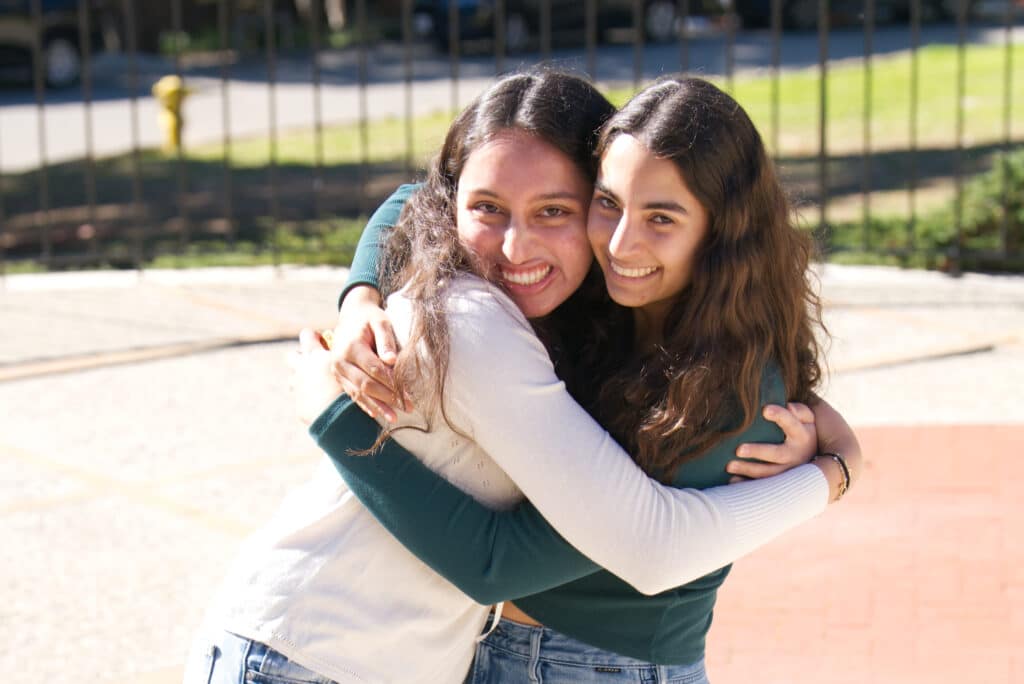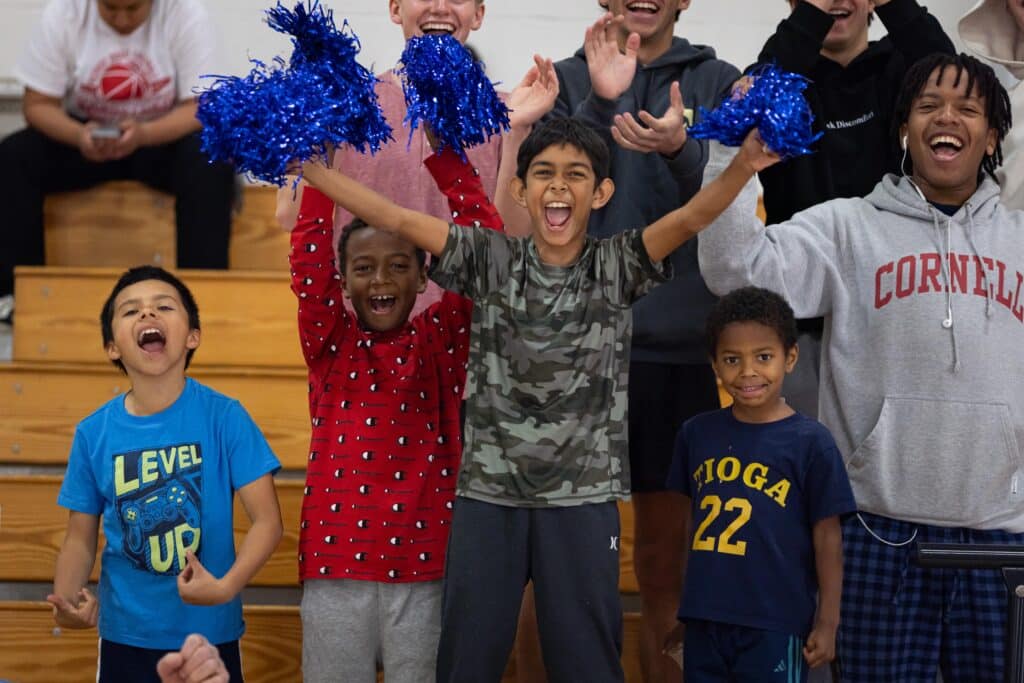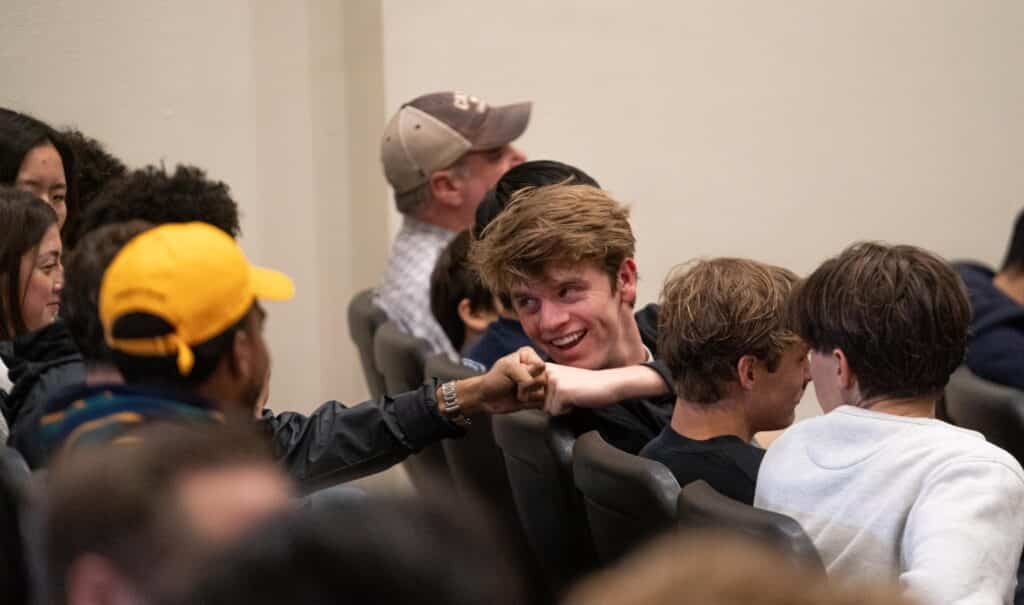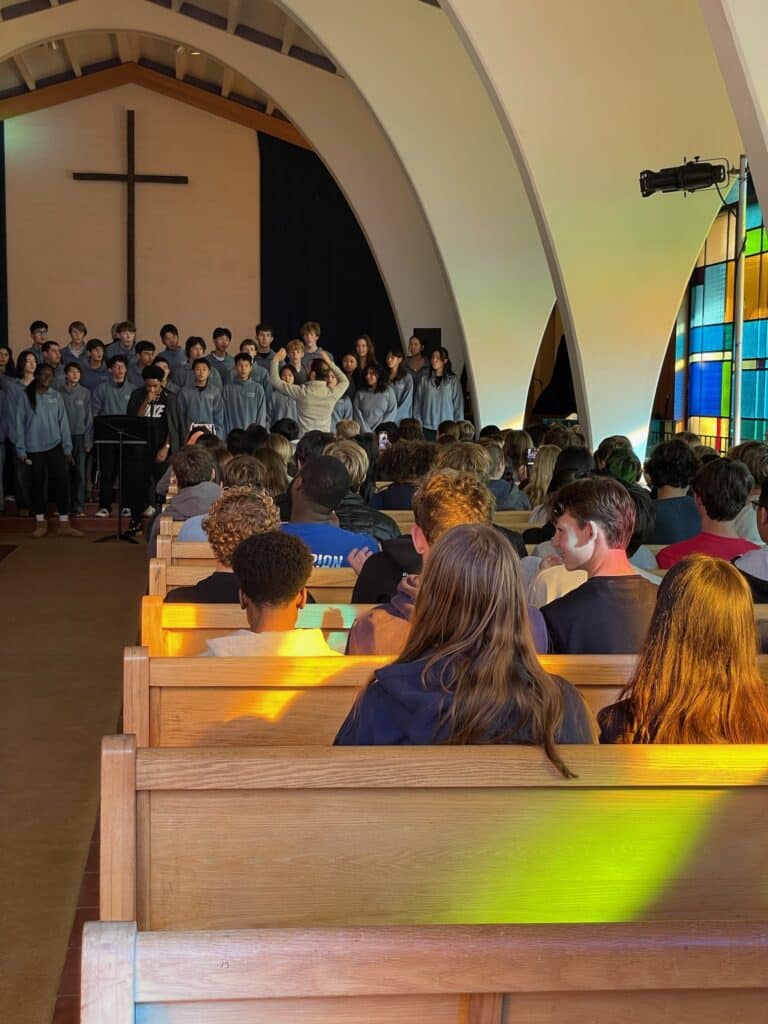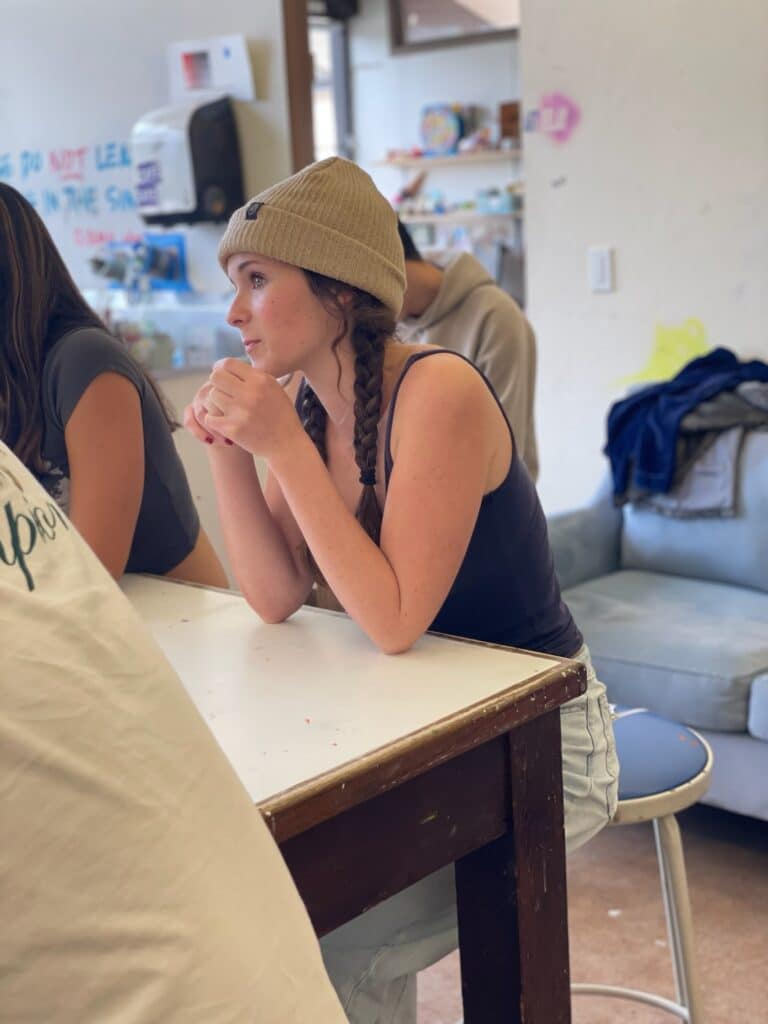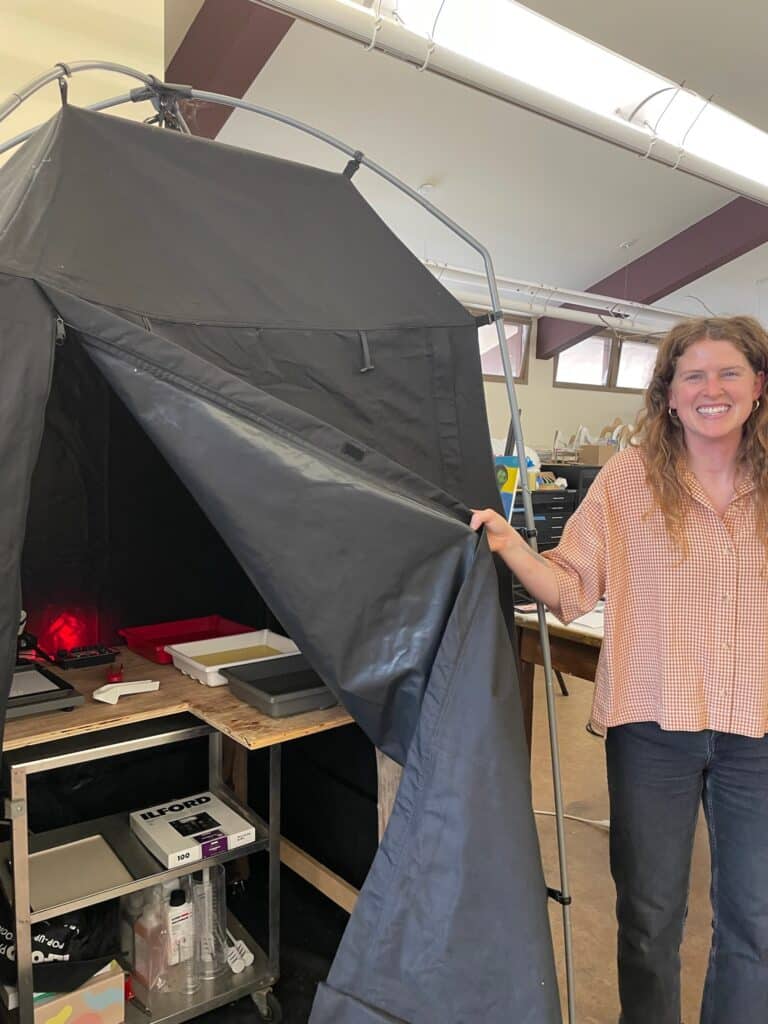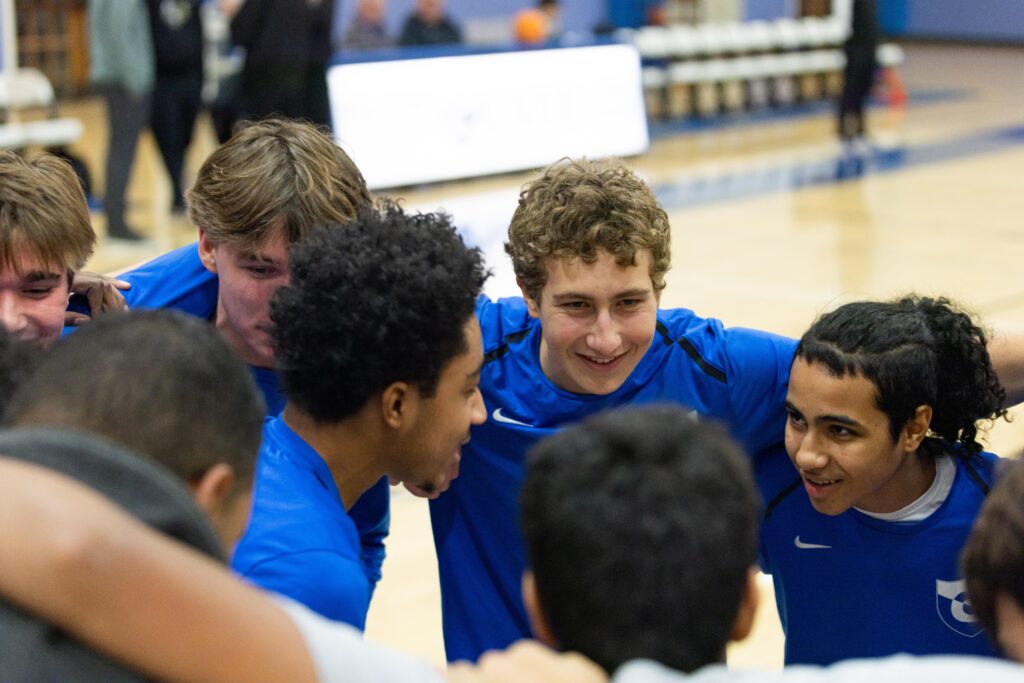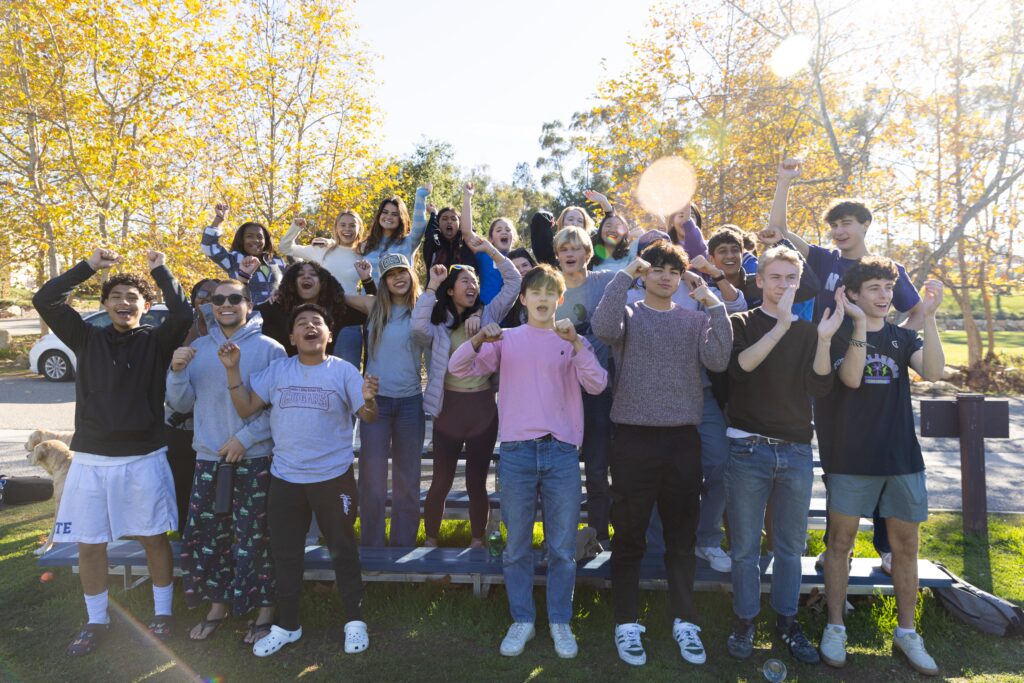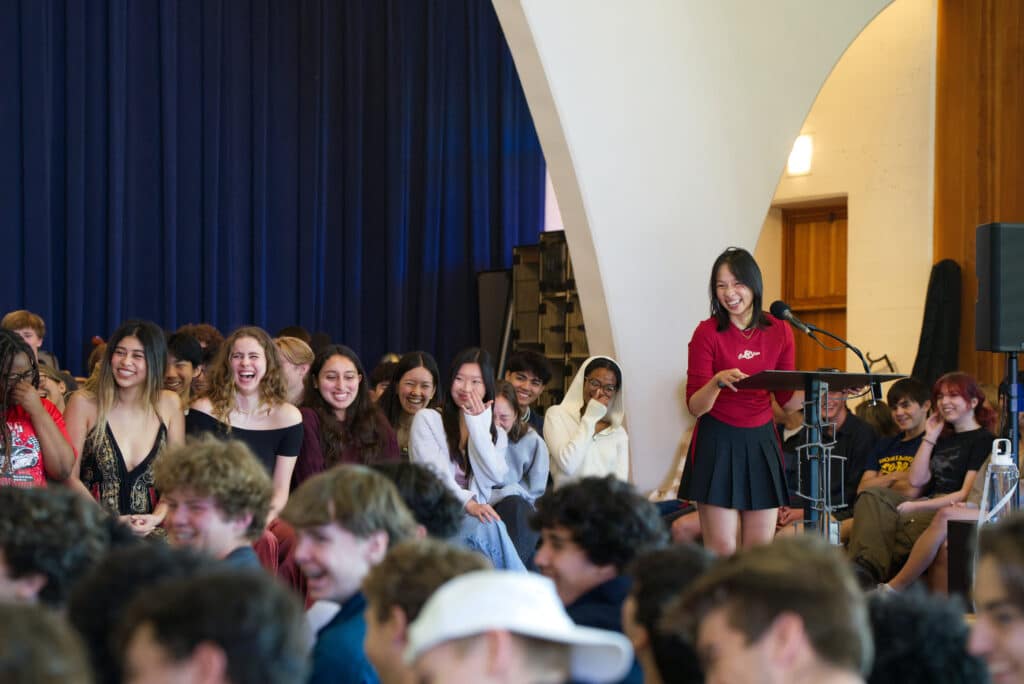Head of School’s Notebook: Joyful
February 15, 2024
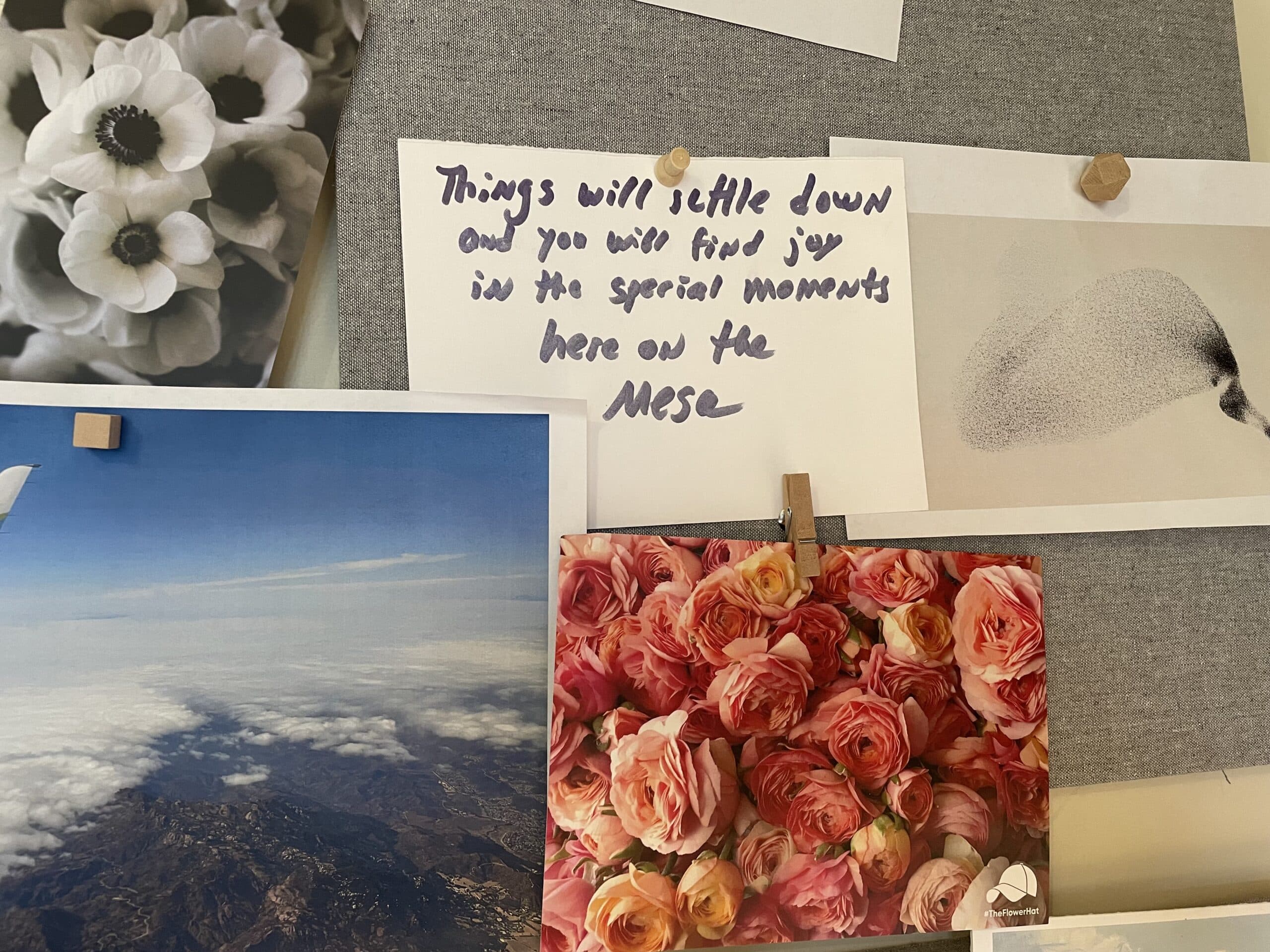 A few weeks into my arrival at Cate, Frank Griffin left this note on my desk, and it has been pinned to my wall since then.
A few weeks into my arrival at Cate, Frank Griffin left this note on my desk, and it has been pinned to my wall since then.
I look at it as a reminder to pause and gauge my own sense of being settled and present to all the magic here. This week has felt especially joyful given my first Free Day announcement, Valentine’s Day celebrations, the start of the spring sports season, and hearing students stories about their community engagement trips. Upon reflection, I realize that joyfulness is one of the most common emotions I experience here at Cate, leading me to wonder: What is it about Cate that leaves so many of us with a feeling of joy?
I believe that joy is an essential and enduring component of the“spirit of this place” which distinguishes Cate even more in this era when the narratives about adolescents are so discouraging and disempowering. While I do not deny that adolescents are facing significant pressures and challenges, I think our cultural hyperfixation on all that is wrong diminishes a sense of hope and ability to see where our teenagers are strong, capable, wise, and joyful.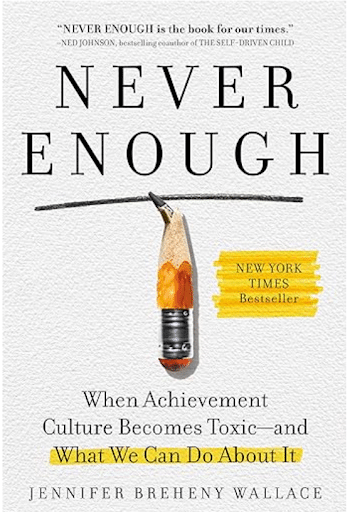
In search of a better way to understand this phenomenon, I’ve been reading Joyful which I initially dismissed as too superficial. However, as I continue to read about the various dimensions of joy, I realize that our ability to cultivate an appreciation of delights in the ordinary has a profound and positive effect on our daily experience of ourselves.
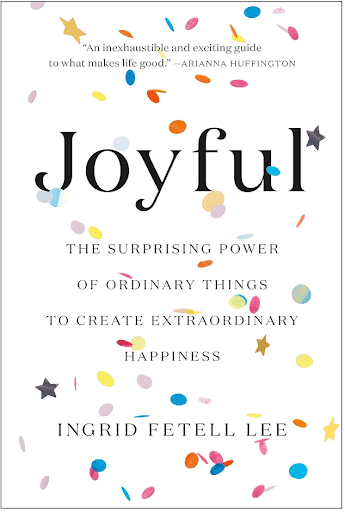
In Adam Grant’s NY Times opinion piece about collective effervescence, he referenced the work of Émile Durkheim (first published in 1912 right around the founding of Cate), who was inspired by the joy he witnessed where, “People sang and danced together and watched and played sports together. They didn’t just find collective effervescence in the shallow fun of frivolous activities; they also forged it in the deep fun of creating together and solving problems together. [That era] brought an explosion of popular art like jazz and talking films, recreation like water skiing and medical advancements like insulin.” The critical component to this phenomenon is these experiences are shared, co-created and rooted in the cultivation of joy as an essential ingredient to creativity, imagination, and transformation.
I see our students and faculty engage in “deep fun” each day where collective effervescence occurs in the laboratory, on the stage, or simply watching the sun set. Because we are a residential school, we have infinite opportunities to experience transcendence where what we share is far greater than what any one of us could cultivate on our own. By modeling this robust way of life, we are defying the narratives of “never enough” with our own statement that together we are more than enough and freely share our joy through acts of service. The very act of modeling a different way to live, learn, and work is a source of tremendous joy for me and one I will continue to collectively create with all the wonderful people on the beyond the Mesa.
